Abstract
Ceftetrame (Ro 19-5247) and cefetamet (Ro 15-8074), two new orally administered aminothiazolyl imimomethoxy cephalosporins, inhibited hemolytic streptococci and Streptococcus pneumoniae at less than or equal to 0.5 micrograms/ml but were less active against staphylococci than were cephalexin and cefaclor. They did not inhibit S. faecalis, S. faecium, Listeria monocytogenes, Corynebacterium JK species, or Pseudomonas aeruginosa. Haemophilus influenzae, Branhamella catarrhalis, and Neisseria gonorrhoeae, including ampicillin-resistant isolates, were inhibited at less than 0.25 micrograms/ml. Both agents inhibited Escherichia coli, Klebsiella pneumoniae, K. oxytoca, Proteus mirabilis, Salmonella species, Shigella species, Citrobacter diversus, and Aeromonas hydrophila resistant to ampicillin, cephalexin, and cefaclor at less than or equal to 2 micrograms/ml, although many isolates of Enterobacter cloacae, Citrobacter freundii, and Serratia marcescens resistant to cefotaxime were not inhibited by these agents. A marked inoculum effect was noted for Enterobacteriaceae carrying the Richmond-Sykes type 1A chromosomally mediated beta-lactamases, but plasmid-mediated beta-lactamases did not hydrolyze the compounds. Both drugs inhibited the chromosomally mediated beta-lactamase of E. cloacae, P99.
Full text
PDF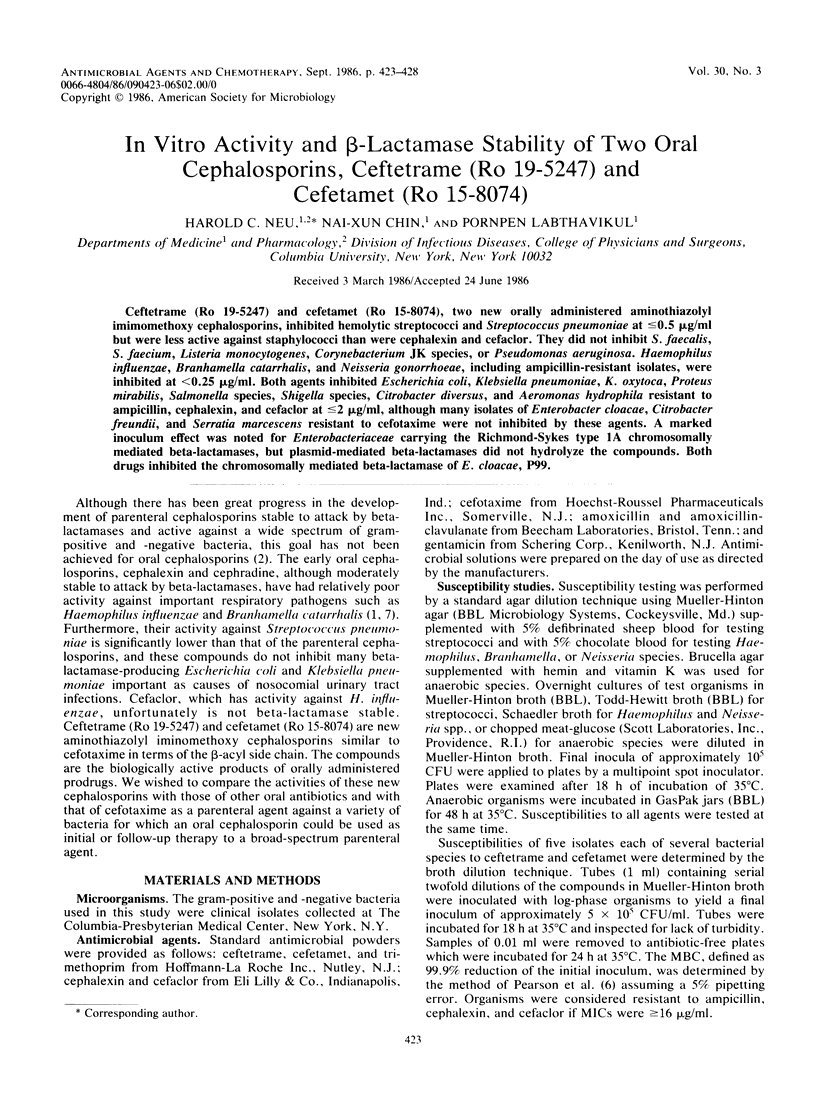
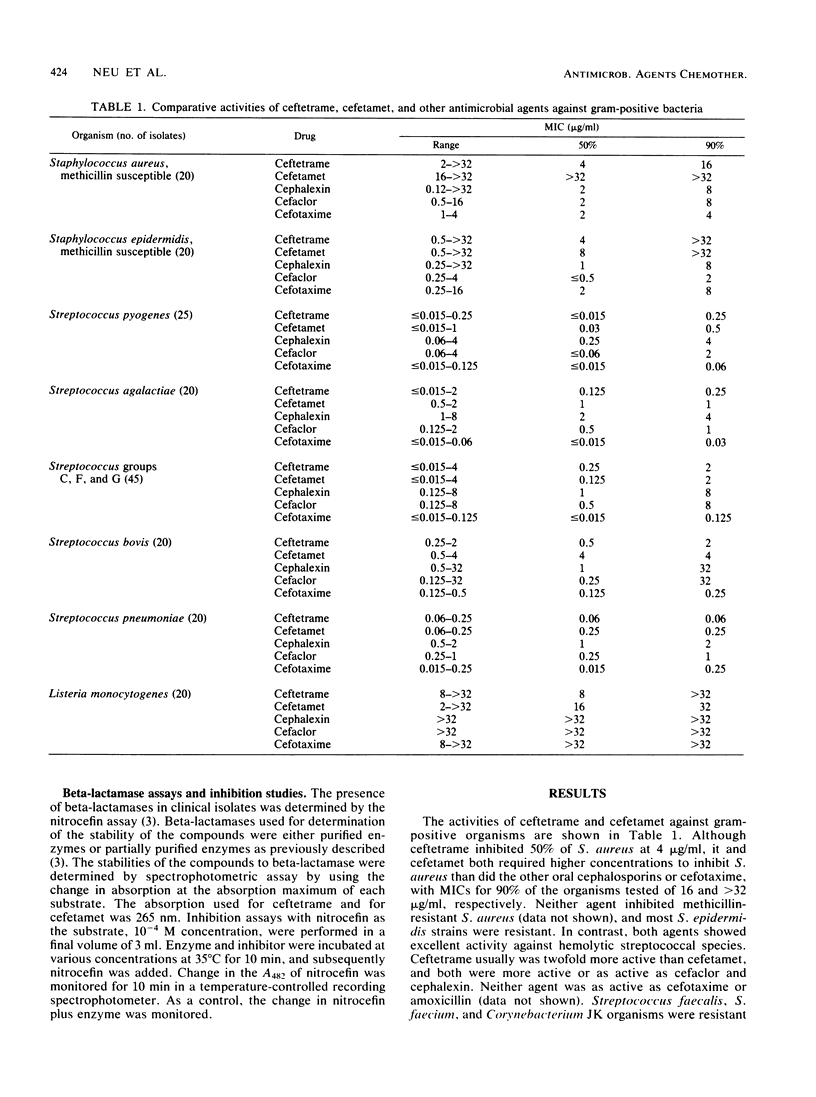
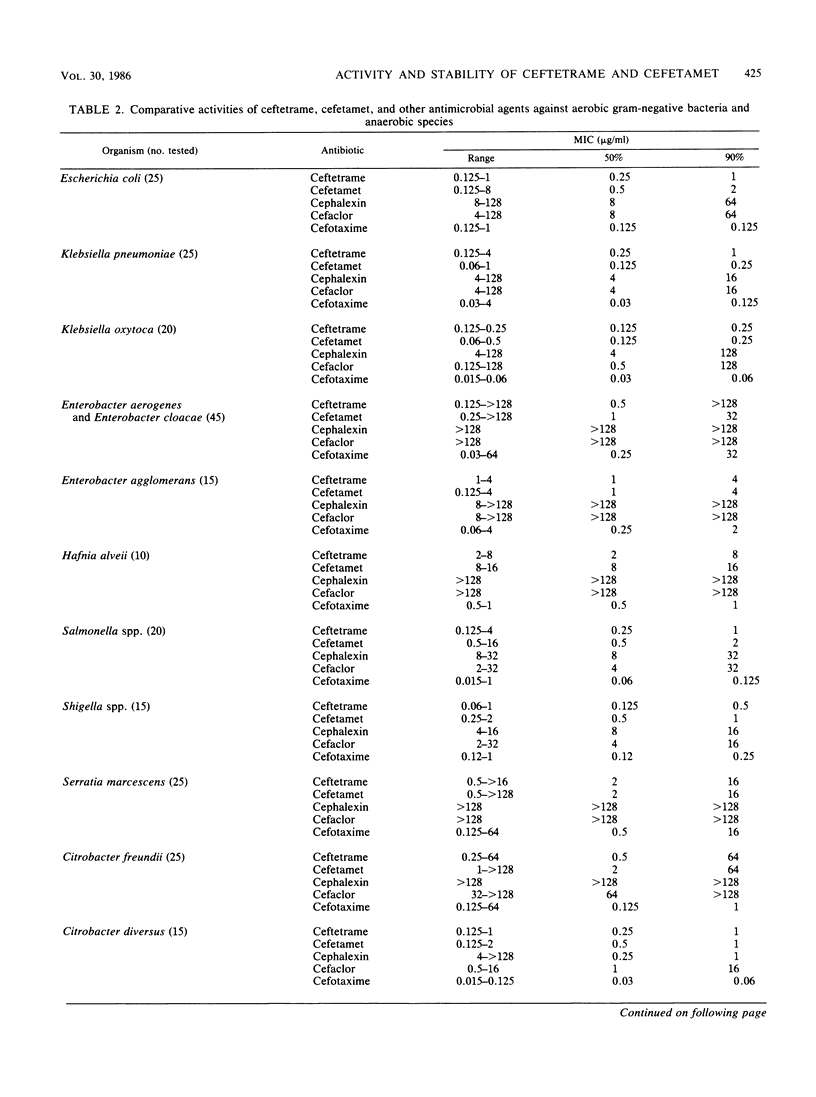
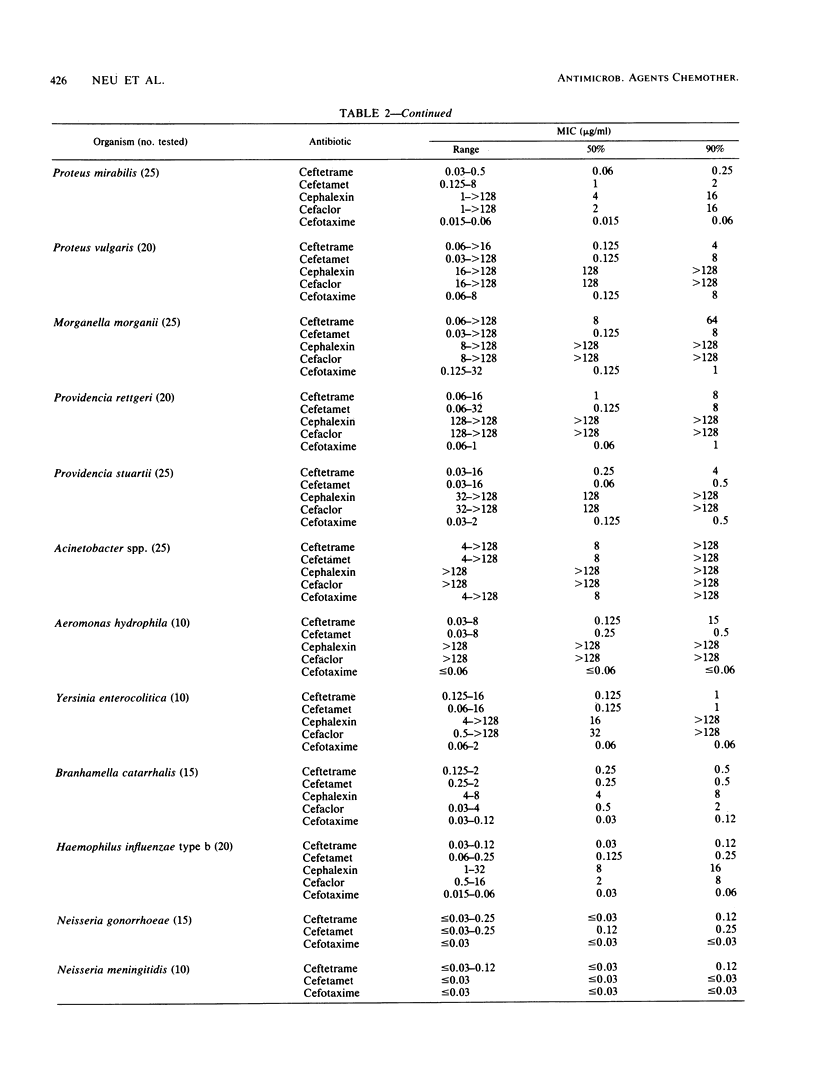
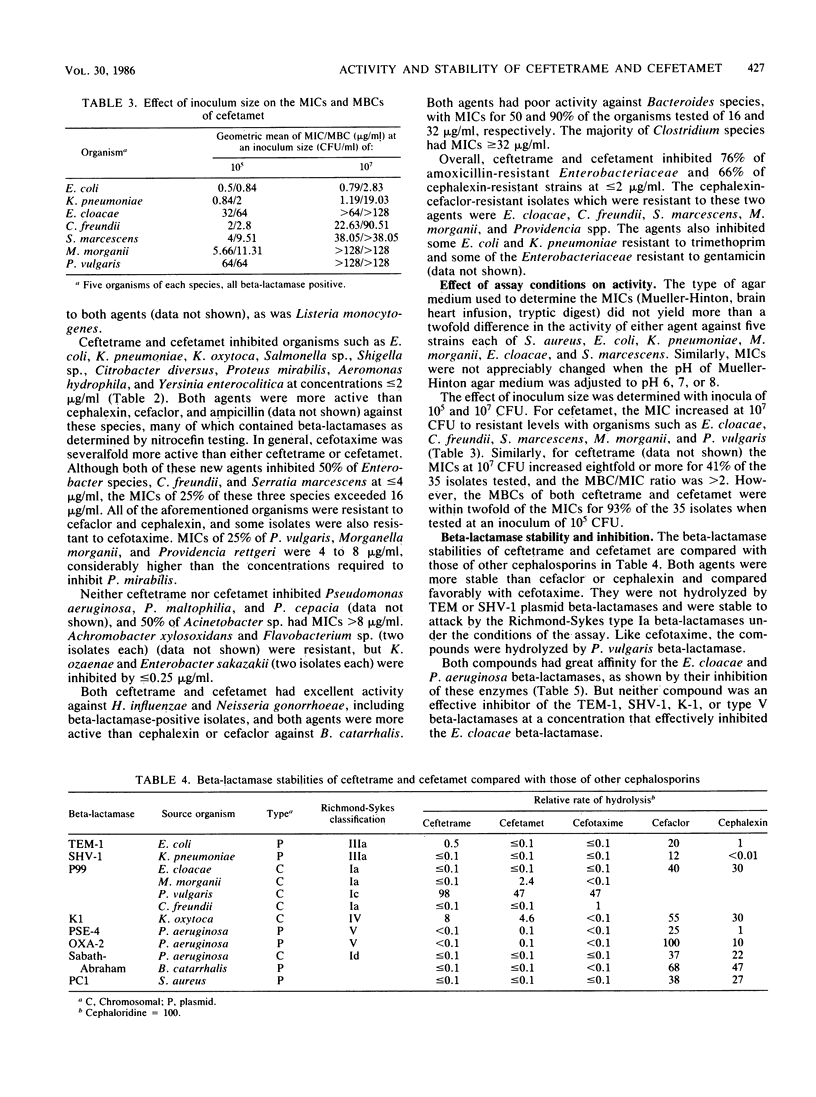
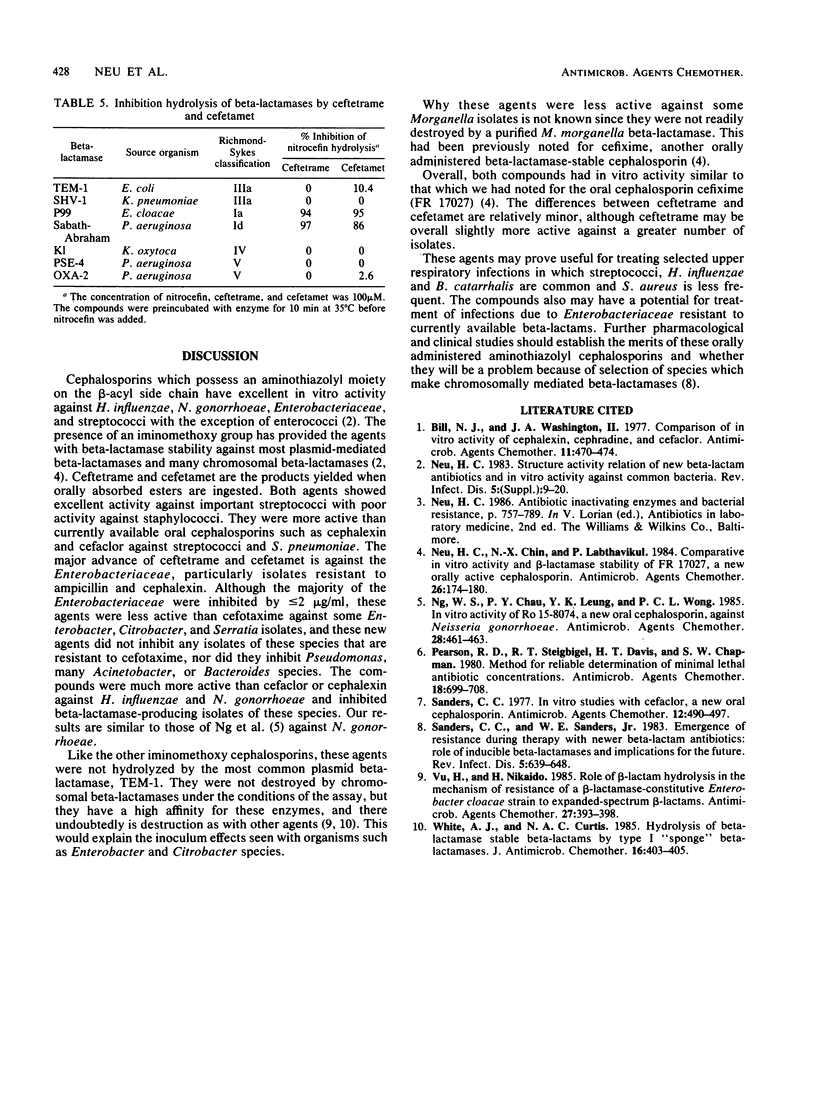
Selected References
These references are in PubMed. This may not be the complete list of references from this article.
- Bill N. J., Washington J. A., 2nd Comparison of in vitro activity of cephalexin, cephradine, and cefaclor. Antimicrob Agents Chemother. 1977 Mar;11(3):470–474. doi: 10.1128/aac.11.3.470. [DOI] [PMC free article] [PubMed] [Google Scholar]
- Neu H. C., Chin N. X., Labthavikul P. Comparative in vitro activity and beta-lactamase stability of FR 17027, a new orally active cephalosporin. Antimicrob Agents Chemother. 1984 Aug;26(2):174–180. doi: 10.1128/aac.26.2.174. [DOI] [PMC free article] [PubMed] [Google Scholar]
- Ng W. S., Chau P. Y., Leung Y. K., Wong P. C. In vitro activity of Ro 15-8074, a new oral cephalosporin, against Neisseria gonorrhoeae. Antimicrob Agents Chemother. 1985 Sep;28(3):461–463. doi: 10.1128/aac.28.3.461. [DOI] [PMC free article] [PubMed] [Google Scholar]
- Pearson R. D., Steigbigel R. T., Davis H. T., Chapman S. W. Method of reliable determination of minimal lethal antibiotic concentrations. Antimicrob Agents Chemother. 1980 Nov;18(5):699–708. doi: 10.1128/aac.18.5.699. [DOI] [PMC free article] [PubMed] [Google Scholar]
- Sanders C. C., Sanders W. E., Jr Emergence of resistance during therapy with the newer beta-lactam antibiotics: role of inducible beta-lactamases and implications for the future. Rev Infect Dis. 1983 Jul-Aug;5(4):639–648. doi: 10.1093/clinids/5.4.639. [DOI] [PubMed] [Google Scholar]
- Sanders C. In vitro studies with cefaclor, a new oral cephalosporin. Antimicrob Agents Chemother. 1977 Oct;12(4):490–497. doi: 10.1128/aac.12.4.490. [DOI] [PMC free article] [PubMed] [Google Scholar]
- Vu H., Nikaido H. Role of beta-lactam hydrolysis in the mechanism of resistance of a beta-lactamase-constitutive Enterobacter cloacae strain to expanded-spectrum beta-lactams. Antimicrob Agents Chemother. 1985 Mar;27(3):393–398. doi: 10.1128/aac.27.3.393. [DOI] [PMC free article] [PubMed] [Google Scholar]
- White A. J., Curtis N. A. Hydrolysis of beta-lactamase-stable beta-lactams by type I 'sponge' beta-lactamases. J Antimicrob Chemother. 1985 Sep;16(3):403–405. doi: 10.1093/jac/16.3.403. [DOI] [PubMed] [Google Scholar]


